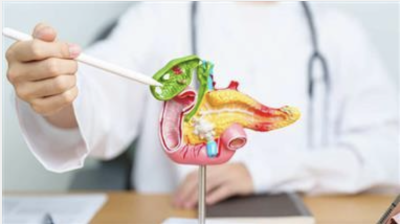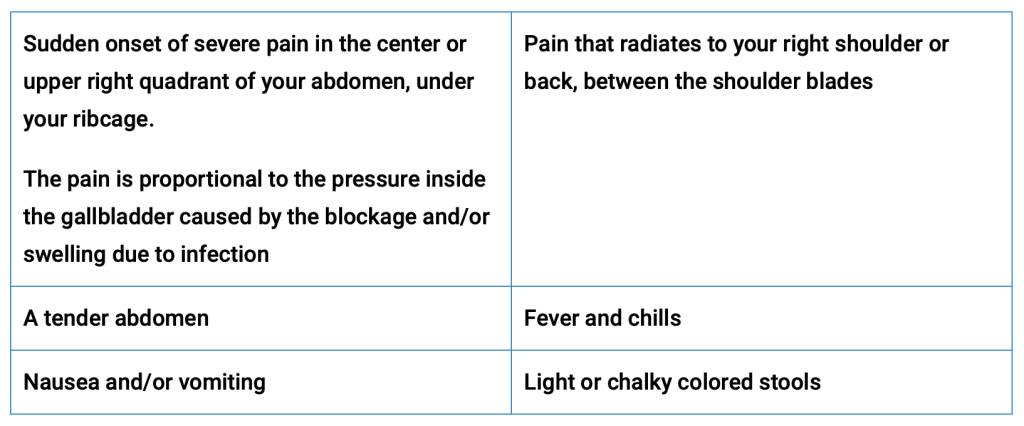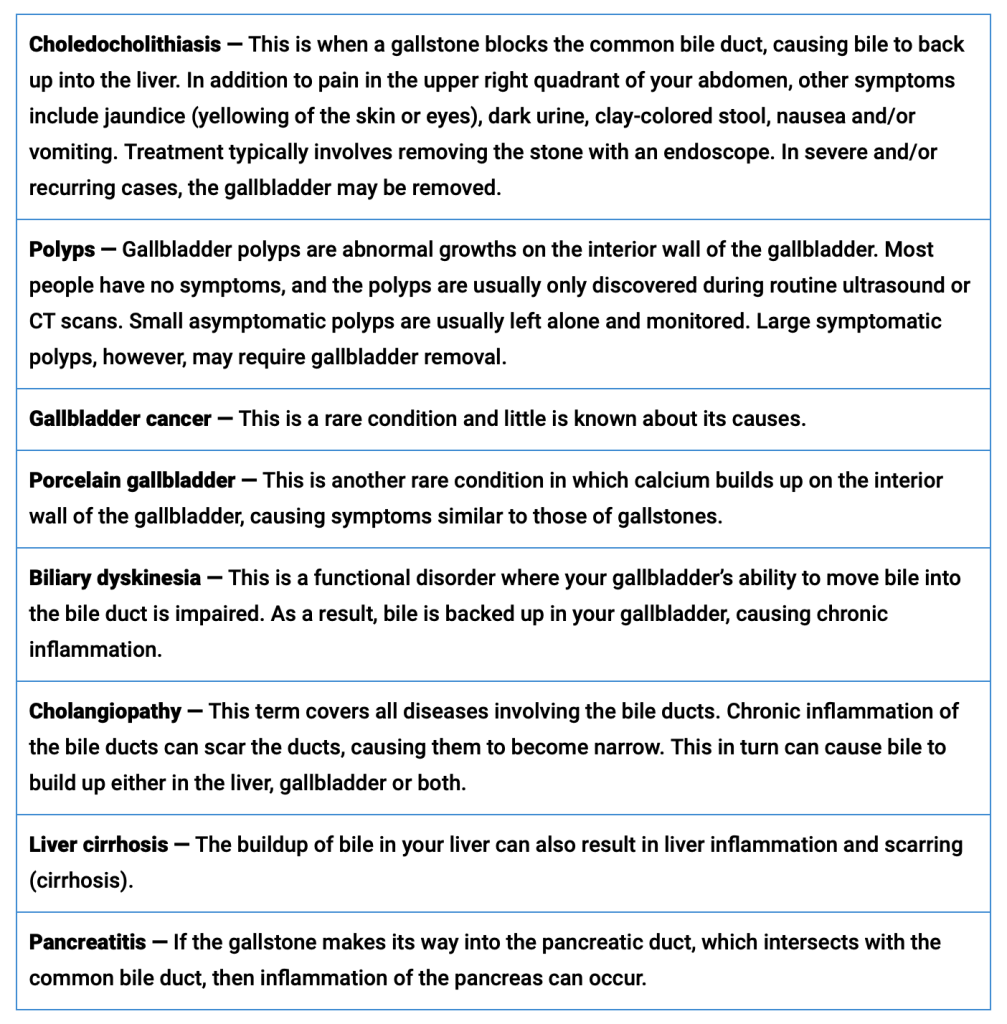Is Your Gallbladder Causing Digestive Issues?

All Global Research articles can be read in 51 languages by activating the Translate Website button below the author’s name.
To receive Global Research’s Daily Newsletter (selected articles), click here.
Click the share button above to email/forward this article to your friends and colleagues. Follow us on Instagram and Twitter and subscribe to our Telegram Channel. Feel free to repost and share widely Global Research articles.
***
Your gallbladder is an abdominal organ that stores and concentrates bile produced by your liver. The bile helps your body break down and absorb the fat that you eat. When you eat a fatty meal, your gallbladder will contract and squeeze more concentrated bile into the small intestine to aid in the breakdown of the fat
Since your gallbladder is involved in the breakdown of dietary fats, digestive problems — especially when eating fatty foods — can be indicative of a problem, even if you have no other symptoms. Digestive symptoms include frequent abdominal bloating, gas, nausea and/or diarrhea shortly after eating
Gallstones are one of the most common types of gallbladder problems that can occur, affecting an estimated 15% of the U.S. population. Women are twice as likely as men to develop them, especially during pregnancy or if using birth control pills or hormone replacement therapy
One of the reasons for this gender difference is because the extra estrogen increases cholesterol while simultaneously slowing down gallbladder emptying. Obesity, diabetes, Crohn’s disease, liver cirrhosis, sickle cell disease, intravenous feeding, a family history of gallstones, use of cholesterol-lowering drugs, high-fat/low-fiber diets and fasting are also risk factors
While your gallbladder performs an important function, you can live without it. Your liver still produces and sends bile into your duodenum, so you can still break down fats to a certain degree. But it’s not as efficient, so people who have had their gallbladder removed are advised to limit the amount of fat in their diets and take digestive aids such as ox bile and digestive enzymes
*
Your gallbladder is a 3- to 4-inch long pear-shaped sack in your abdominal cavity located beneath your liver. It stores and concentrates bile produced by your liver. The bile helps your body break down and absorb the fat you eat.
When you eat fat, your liver sends bile directly into the duodenum (small intestine). Your gallbladder will also spring into action, contracting and squeezing more concentrated bile through the common bile duct into the small intestine to aid in the breakdown of the fat. Carbs and proteins are more easily digested and don’t need this extra bile.
Bile is made up of water, cholesterol, lecithin, bile salts (which break fats into smaller droplets that are easier for digestive enzymes to process) and bile pigments. The primary bile pigment is bilirubin, made from red blood cells that are broken down in the liver. This pigment is responsible for making urine yellow and stool brown.
Your pancreas also plays an important role in the digestive process. It produces and sends enzymes into the common bile duct via the pancreatic duct. Together, the digestive juices from your liver and pancreatic enzymes break down the food you eat into liquid form so that your body can absorb the nutrients from it.
Since your gallbladder is involved in the breakdown of dietary fats, digestive problems — especially when eating fatty foods — can be indicative of a problem, even if you have no other symptoms. Digestive symptoms include frequent abdominal bloating, gas, nausea and/or diarrhea shortly after eating.
Risk Factors and Symptoms of Gallstones
Gallstones are one of the most common types of gallbladder problems that can occur, affecting an estimated 15% of the U.S. population.1 Women are twice as likely as men to develop them, especially during pregnancy or if using birth control pills or hormone replacement therapy.
One of the reasons for this gender difference is because the extra estrogen increases cholesterol while simultaneously slowing down gallbladder emptying. Obesity, diabetes, Crohn’s disease, liver cirrhosis, sickle cell disease, intravenous feeding, a family history of gallstones, use of cholesterol-lowering drugs, high-fat/low-fiber diets and fasting are also risk factors.2,3
Gallstones typically consist of crystallized bile, and if large enough to block a biliary duct, can cause varying degrees of pain. Left untreated, the blockage can lead to cholecystitis, or inflammation of the gallbladder. Common symptoms of cholecystitis include:
A gallbladder infection needs to be treated to avoid gallbladder rupture, which can be life-threatening, gangrene, or a gallbladder abscess. Abscesses occur when a pocket of pus forms inside the gallbladder. In severe cases of cholecystitis, the gallbladder is removed, but milder cases may be treated with anti-inflammatory drugs.
This is why you want to be really careful with your gallbladder and at the first sign of symptoms treat it as if you didn’t have a gallbladder so you can reverse the process and not have it surgically removed as so many people do. Not much you can do after a surgeon removes it for you as no way are you getting a gallbladder transplant.
Other Types of Gallbladder Disease
Cholecystitis can also develop in the absence of stones, although it’s far rarer. Only 5% of acute cholecystitis cases are so-called acalculous, meaning there are no stones present.4
Acalculous gallbladder disease is thought to be caused by bile build-up due to a lack of oxygen to the gallbladder. In these cases, the gallbladder is typically removed. Other potential gallbladder problems include:5,6
Can You Live Without a Gallbladder?
While your gallbladder performs an important function, you can live without it. In fact, many do, as gallbladder removal is one of the most commonly performed surgeries in the U.S.7
Your liver still produces and sends bile into your duodenum, so you can still break down fats to a certain degree. But it’s not as efficient, as the bile from your liver is less concentrated. This is why people who have had their gallbladder removed are advised to limit the amount of fat in their diets and take digestive aids such as ox bile and digestive enzymes.
Fat malabsorption is also common among people with functioning gallbladders. Symptoms such as sticky stools, stools that float, frequent diarrhea, digestive upset, gas and/or soft foul-smelling stools right after meals, chronic dry skin and hair loss are common symptoms suggesting you may not be digesting fats properly.8
How to Improve Digestion of Fats
Whether you’ve had your gallbladder removed or not, you can improve your digestion of fats using:
- Bitters — Bitters help stimulate the production of bile to boost the digestive process. The first signals for bile production come from your tongue, so taking a tablespoon of bitters right before eating can get the flow of bile going.
- Betaine hydrochloride (HCI) — Betaine HCI — not to be confused with betaine or trimethylglycine (TMG) — increases the concentration of stomach acid, which is required for digestion of food. It also signals your pancreas to release digestive enzymes. If your stomach acid is too low, some of the food you will remain largely undigested.
- Digestive enzymes — In many people, the pancreas doesn’t produce enough digestive enzymes. In this case, taking a digestive enzyme supplement with each meal can help. There are five primary digestive enzymes, each designed to help break down different types of food:
- Protease breaks down protein
- Amylase breaks down carbohydrates, sugars and starches
- Lipase breaks down fats. If you have IBS, cystic fibrosis, celiac disease, no gallbladder or gallbladder dysfunction, you may benefit from higher levels of lipase
- Lactase breaks down milk sugar (lactose) in dairy products
- Sucrase breaks down sucrose sugars
Taking a blend of enzymes is usually ideal, as no single enzyme can perform all the necessary functions throughout your digestive tract. That said, if you have irritable bowel syndrome (IBS), cystic fibrosis, celiac disease, no gallbladder or gallbladder dysfunction, you may benefit from higher levels of lipase in particular.
- Ox bile — Ox bile, which is most similar to that of humans, is particularly important after you’ve had your gallbladder removed. Ideally, take one tablet along with a lipase-containing digestive enzyme shortly before meals.
As noted by biohacker Dave Asprey, you can also improve your digestion of fats by eating the right fats:9
“C8 MCTs (caprylic acid) … skips a few steps in digestion. You don’t need bile for your cells to use it. Having a little bit of caprylic acid every day will help your body replenish the fats it’s been missing out while you haven’t been digesting fats.
Eating more fats will stimulate your liver to produce more bile, which will mix with stagnant bile and thin it out. Eating high quality fats like avocados, salmon and coconut oil to get things flowing.”
How to Avoid Gallstones
While it’s still unclear why gallstones form, a number of lifestyle strategies are known to lower your risk, including the following:
- Get regular exercise
- Clean up your diet — Avoid processed foods and grains, keep hydrated, opt for healthy high-quality fats and eat more high-fiber foods such as fruits and vegetables
- Lose weight gradually — Rapid weight loss may raise your risk of gallstones
- Avoid extended fasting, not only will it help your gallbladder, but it will increase your health as fasting is not as healthy as I previously believed as it increases your stress hormones and worsens mitochondrial function
*
Note to readers: Please click the share button above. Follow us on Instagram and Twitter and subscribe to our Telegram Channel. Feel free to repost and share widely Global Research articles.
Notes
1, 3, 5 Cleveland Clinic Gallbladder Disease
2 Sante Chiropractic October 24, 2013
4, 6 Diseases of the Abdomen and Pelvis 2018-2021: Diagnostic Imaging – IDKD Book. Chapter 5
7 My Health The Digestive Process
8, 9 DaveAsprey.com How to Digest Fats Better
Featured image is from Mercola



